#fuji gfx-s
Explore tagged Tumblr posts
Text
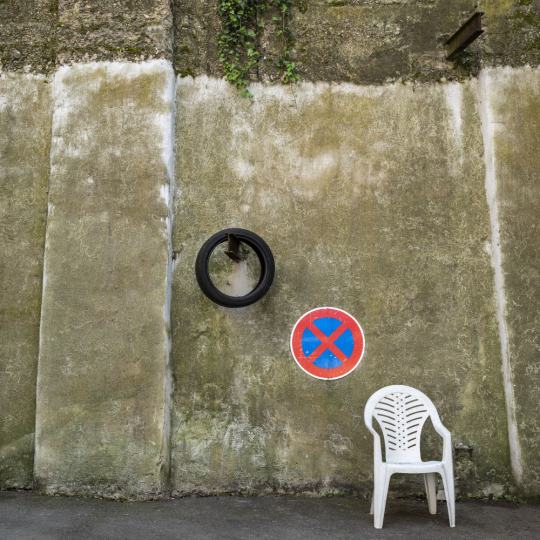
chair
#© victor s. brigola#brigola#chair#wall#backyard#stuttgart#germany#sign#no parking#architecture#fuji gfx-s
6 notes
·
View notes
Photo
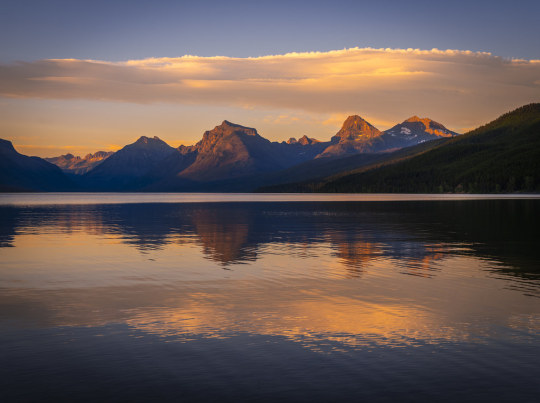
Lake McDonald West Glacier National Park Summer Storm Montana Wilderness Fine Art Landscape Photography Fuji GFX100s Medium Format MT! Elliot McGucken Master Fine Art Nature Photographer American West Fuji GFX 100 s & GF Lens Glacier NP 45EPIC ! by 45SURF Hero's Odyssey Mythology Landscapes & Godde
#lake#mcdonald#west#glacier#national#park#summer#storm#montana#wilderness#fine#art#landscape#photography#fuji#gfx100s#medium#format#mt#elliot#mcgucken#master#nature#photographer#american#gfx#100#s#gf#lens
0 notes
Text
Small brain: Perrin is a descendant of that one guy in Pokémon Legends: Arceus

Big brain: her camera looked like a hassleblad at first becaus the body was tall and wide, but also thin making me think it’s a medium format mirrorless camera.
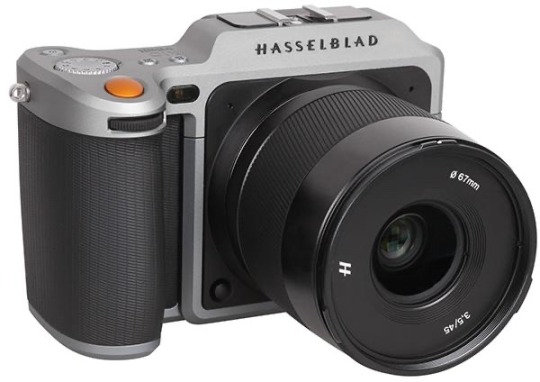
But it has a more angled shutter button and a thinner viewfinder bump. Looking at Fuji and Nikon cameras (because Perrin’s camera is silver and no other brands have metal finishes on their cameras) it’s not a Fuji XT series or a Nikon zfc because angled shutter button

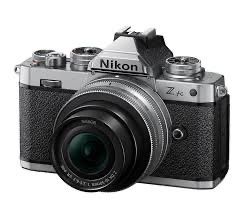
however the physical shape matches a Fuji GFX-[numbersHere]S series or the XHS series .
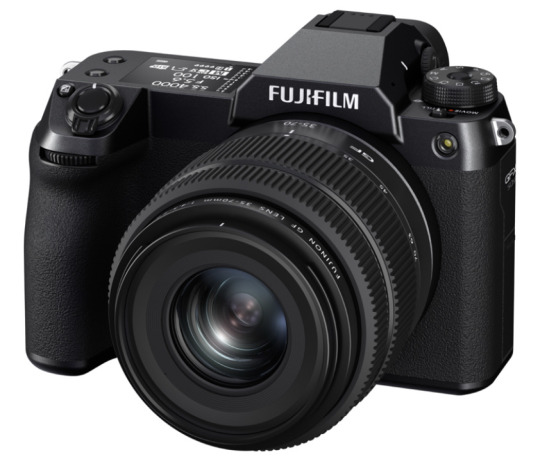
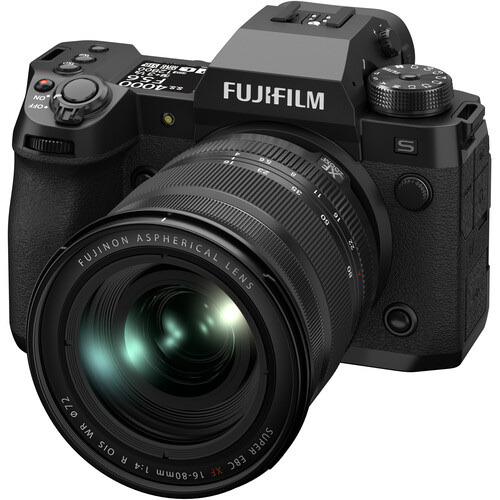
In conclusion, the camera doesn’t technically exist because Game Freak wanted to dodge copyright issues, and
I’m a nerd.
#pokemon#perrin#I’m over analyzing this#photography#please add to this if you have any better idea what the camera is most similar to
20 notes
·
View notes
Text
I went Full-Fuji! (GFX One Year Review)
One year ago, I decided to ditch my Nikon DSLRs for a Fujifilm GFX 50R.
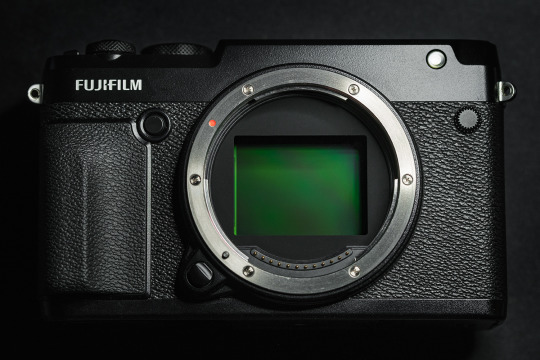
The GFX's sensor is larger than a full-frame sensor with a crop factor of 0.79
A little over a year ago, I still was using a few Nikon DSLRs to do just about anything. For portraits and landscape, I had a very respectable D810. Enough megapixels to provide some room for cropping and a decent dynamic range for most situations. For action and hobby-wildlife I had a D500. A durable mini-tank with performance that to this day would be hard to dismiss even in the light of mirrorless flagship innovation.
However, the question of my camera-future slowly crept into my mind. Was it time to change and upgrade into the Nikon Z system? Switching to a Z7 would indeed have been a sensible move, adapting older lenses while getting the sensor of the D850 in a smaller, cheaper body with an ecosystem of native lenses with the optical quality up to specs for the next decade. On paper and elsewhere, it should have been the obvious choice. Yet my answer to this question was a resounding "no" and I went against reason to set my sights on a Fujifilm GFX 50R. I took that model over the S because I enjoy the rangefinder form factor.
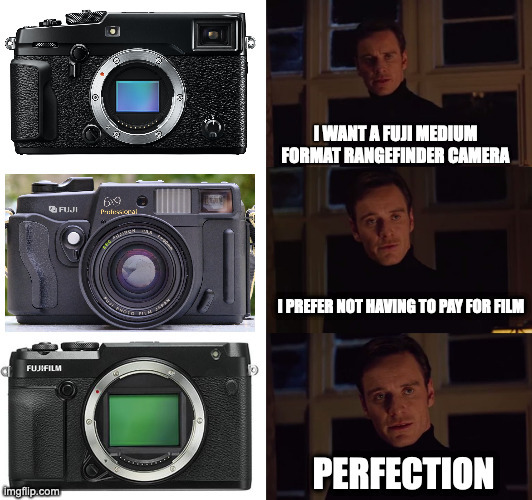
In hindsight, the smartest of all moves would probably have been to remain with what I had, adhering to the ancient photographic wisdom: "lenses are more important than cameras". My kits could have kept me satisfied for probably another 10 years if we are being honest. I could have stayed within the F mount ecosystem and could have taken advantage of its downright insane price drops to get top-of-the-line lenses for peanuts instead of selling the farm on a whim, however carefully considered it might have been.
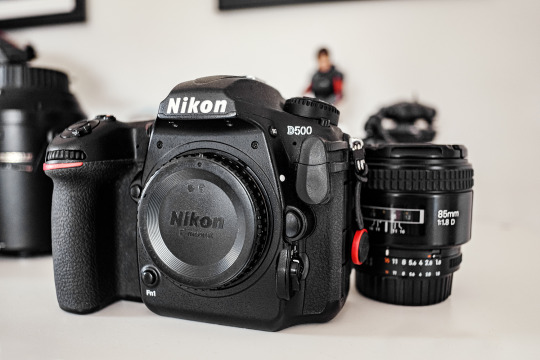
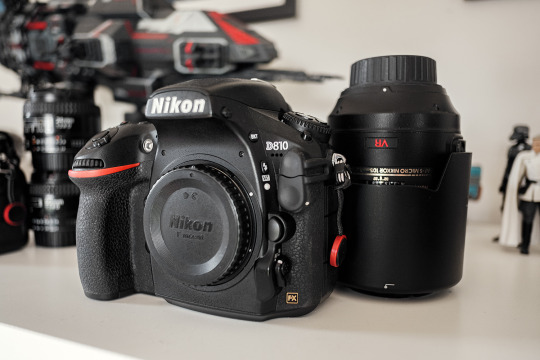
These old and trusty Nikon DSLRs got sold off to finance the 50R
The truth is that after fifteen years of walking the beaten paths camera-wise, I wanted to shake things up. I longed for a change of pace. I felt confident enough in my practice to know what type of photography I would want to engage in for the foreseeable future. I also felt confident enough that I'd be able to answer the call of the occasional assignment using a camera system that would have a non-negligible amount of drawbacks. The challenge even seemed like a fun new variable to add to contracts. Thus, the choice I made for my photographic future has been one born out of love rather than made from a place of reason.
When I think of good photographic memories involving the process — how photography is approached with mind and body — I immediately have two very different ideas jumping to mind and each has an ideal type of tool that best suits it. Neither of these are about efficiency. Neither of these are about performance beside niche-performance, perhaps. But that, is more of an acquired taste and it also comes at a price, but we'll see about that later.
The first idea is an instinctive and spontaneous approach, form of feral and visceral active meditation, akin to Daido's rabid dog method; roaming the streets clear of thoughts and letting the subconscious take the helm. Shooting, shooting, shooting and discovering everything later. No plan, only image-taking. No clear framing, no image-reviewing, no judgement to pass, no threads to weave. Only arrange and make sense later, if there's any of that to find.
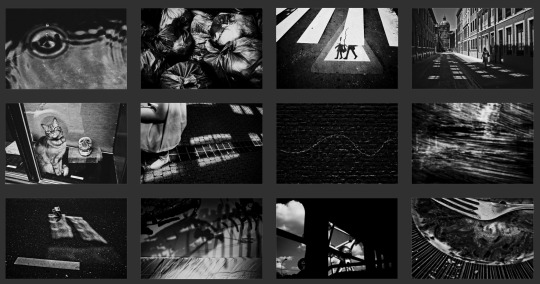
Results using the "rabid dog" method, using a Fujifilm X100, 2014
For this type of photography, the Fujifilm X100 was the tool that instantly clicked with me. The "poorman's Leica" is an apt way to describe what the X100 represented when it came out. I got the original 12mp camera in 2012 as a fun but capable toy to bring along my Nikon D700, until the shutter release button (which also is the on/off switch) broke off in 2020 after one power-up too many. I have since replaced it with a Fuji X-Pro 2 with the XF 18mm F2, 27mm F2.8 and 50mm F2 lenses. To this day, such small Fuji bodies are my tool of choice for this kind of photographic mood (and of course, for family pictures).

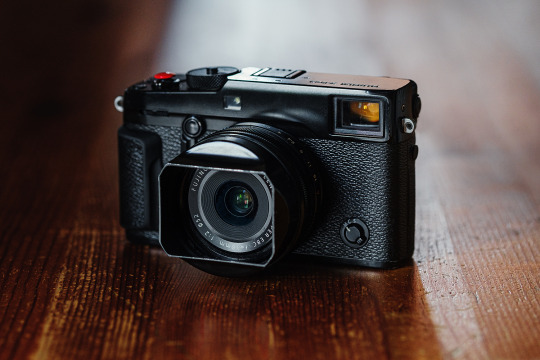
Fuji X100 later replaced by the X-Pro 2 as street photography go-to.
The second photographic process that I tend to naturally gravitate towards stems from my first year of photography school, during which all projects had to be done using film and would have us deal with the whole process (that is to say; shooting, developing, printing, framing, and displaying our work ourselves). It is with nostalgia that I look upon the memories from that time.
There sure is something inherently different in figuring out what to do with the exposures one has left on their film than being able to inconsequentially shoot within two hours three thousand pictures through which you can almost immediately browse. The latter is of course more practical and a welcome technological improvement, but the former brings an unhurried and deliberate focus that I find both refreshing and appealing.
When I think of my strongest recollection of touching the quintessence of the analog experience, the days of using my Mamiya 645 immediately come to mind. Such sluggish, heavy-as-a-couple-bricks box-machines compel one to being careful and purposeful every step of the way. I need that too.
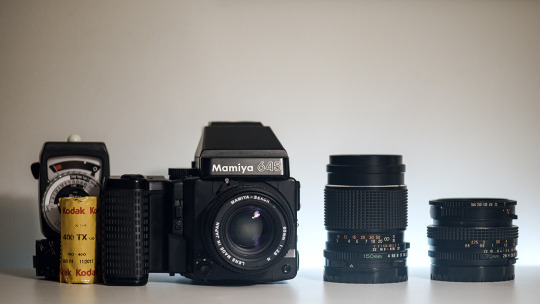
Mamiya 645 Super, since sold to finance GF lenses.
I have for the longest of time considered getting a more serious medium format camera but some quick-math with the price of film, chemicals and photographic paper made me realize that digital medium format was actually much more worth the investment while most definitely retaining some of the core characteristics of its analog counterparts. My love for the film process couldn't hold up against all the advantages of going digital, especially when buying second-hand.
Using medium format always felt like journeying inwards. It has allowed me to spend long hours in daydreaming-states paradoxically laced with an acute awareness of my surroundings. When thinking about medium format, I can recall the soul-washing quality of some of the winds that swept my cheeks while I was standing next to the tripod waiting for the exposure of the 50iso film to finish.
States of contemplation. Another kind of active meditation?
Of course, any camera can provide this type of feeling, but of all of the digital cameras available, medium format is the one type that will weigh you down the most and dictate the pace you work at.
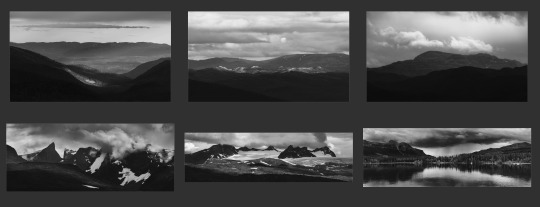
Telepanoramas created with the Fujifilm GFX 50R
Notice how these two ideas are almost the ends of a spectrum?
The first one is nervous and agitated, highly reactive, while the other is composed, meticulous and invites introspective fugue-states, yet they both share one vital element in the way that I approach them in that they take the practical considerations out of the picture to leave more space for what is going on within me.
The setting up of the camera or lack thereof becomes an excuse for something else. Maybe it isn't a surprise, that my adhd-ridden brain experiences this inexorable attraction for both these approaches. For they are in essence, two sides of the same coin, with each side matching different, specific and fluctuating needs.
Let's dive in!
After selling my DSLRs, I started looking for a good second-hand candidate. After a month or so, I found a barely used GFX 50R sold with a 50mm 3.5, a couple additional batteries and an L-bracket to boot. The price was rather attractive for the bundle, so it seemed like the time to take the leap. After a short but excruciating wait for the package to arrive, I finally was able to join the larger-than-35mm-sensor club.
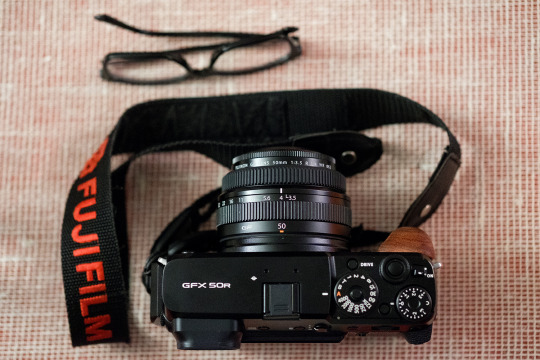
How it started
My first few months with the camera had me immediately blown away by the difference in output. The higher resolution and the sensor's qualities made the (very much existing) noise hardly noticeable when downsized to small printing or screen-viewing sizes. What also immediately struck me, was the looks of the images the camera produced. Images taken with the GFX feel more "3D" to me. It is a very peculiar and hard to describe feeling. I suspect it is a combination of factors; the depth of field of the larger sensor and the very smooth transitions between what's in focus and what is not that it permits, the colour depth, and the quality of the optics. I've seen many Youtube reviews, read forum threads or been in discussions on Discord about GFX cameras where people (who more often than not don't own one) will maintain that these qualities don't exist at all. After a year in the system I can confidently state that they're wrong.
I can't really put my finger on what causes these differences as I am not as tech-savvy as I could be, but it is still clear as day. To use a pretty apt analogy, I would say that the difference between full-frame and (crop) medium format is akin to the difference between aps-c and full-frame cameras. Are they deal-breaking? Not necessarily. For some people they can be. Are they noticeable? Definitely. It is especially funny to me to see medium format cameras being dismissed by such a many full-frame shooter who at the same time, is constantly bashing aps-c sensors.

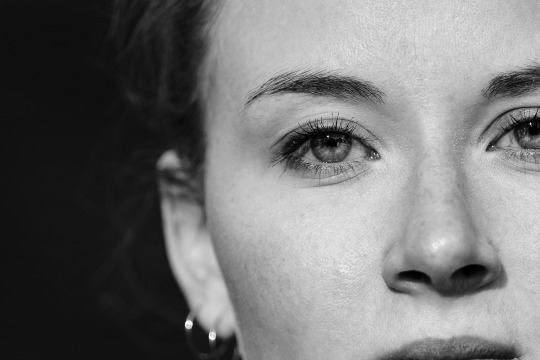
Don't you love to pixel-peep? Omnomnom (imagine with 102mp!)
This being said, I will always fully stand by the statement that full-frame cameras are the more sensible choice as they are better all-rounders by design. High-res cameras like Sony's A7RV or equivalent are also better high-iso performers than the aging IMX161 sensor that the GFX 50 series uses, which sees its operational limit at around 6400iso (but the GFX 100 would be another matter entirely). A top-tier full-frame camera is evidently more practical, lighter and cheaper without any deal-breaking image quality difference to what the medium format niche can offer. When all costs are factored in, the choice would seem self-evident. If you consider medium format, it should be understood that you know this before committing to any bigboy sensor. Or don't heed this and make people who buy second hand happy, as GFX gear loses almost one third of its value once it hits the second hand market (a consequence of too many people jumping on the medium format bandwagon only to realise — way too late — that it wasn't for them).
Are we cooking yet?
I need to talk about the GFX's files for a little bit; I'm a raw shooter only — which hopefully you'd have guessed — (in my opinion anyone buying into a medium format to shoot jpeg must have cognitive issues or too much money, or possibly both) and I have to say that when I opened the raw files to give the sliders their very first +100/-100 or +3/+4 EV from base iso (or any combination of these) I was utterly floored by how well the files could handle such an ungodly beating.
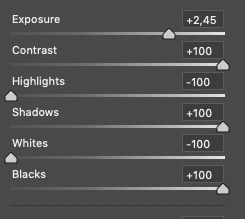
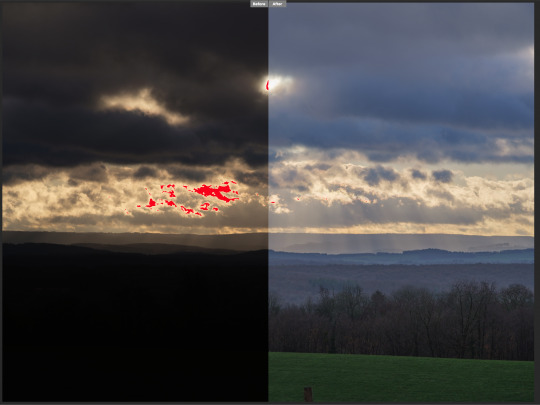
This isn't a joke, I promise.
This type of camera makes the slider memes come true, to a point where for the first few months, my ability to edit properly was severely impaired by the glee I experienced while pushing everything way too far. I believe it is not an uncommon symptom at the start of a medium format journey. It takes a while to come back from that and simply be able to tell yourself "ok here, maybe less dynamic range would be a good edit". I'm getting better at this as I consciously try to avoid overcooking.
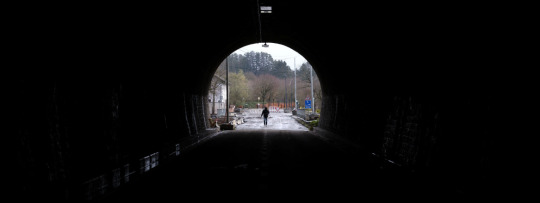
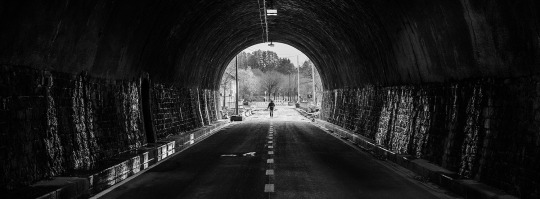
Clean recovery? Can do!
On the image-taking side of things, the major change for me with regards to file-handling is that I'm almost systematically exposing for highlights now. Adding 3EV and boosting shadows in post when shooting at low iso is inconsequential in terms of image quality as there won't be any visible noise whatsoever on the output, unlike my aps-c cameras that will show noise even at base iso. Similarly to many other aspects medium format manages well, this is something I got used to very quickly.
To adapt or to not adapt, that was the question, here's my answer:
At first, I tried adapting my old Mamiya 645 lenses to the 50R. It was useful in the sense that it allowed me to enjoy different fields of view at no cost but it quickly felt like a plaster on a wooden leg. I'm not someone who enjoys the manual focusing as a default and I've grown more and more intolerant of the optical flaws of older lenses as time went by. I realised that it wasn't a viable long term solution for me and quickly chose to sell all my Mamiya cameras and lenses to finance native glass for the GFX.
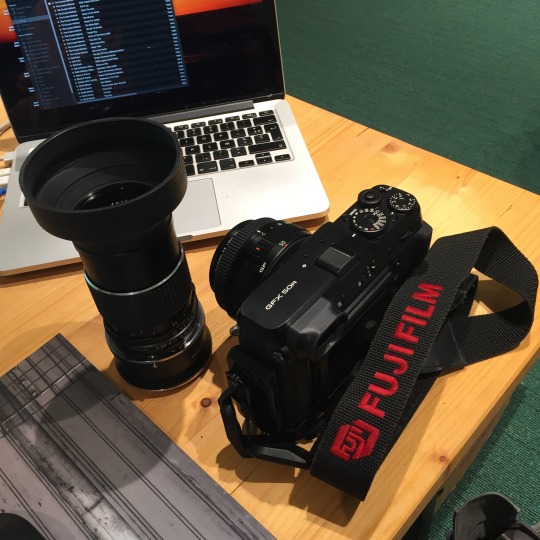
My experience adapting? It was alright but not at all ideal.
Which lenses then?
Getting into the GFX system I promised myself I would make no compromise whatsoever on optical quality and directly aimed for the 250mm F4 (mainly for tele-landscapes) and 110mm F2 (mainly for portraits). The grind felt long but it really wasn't, as I managed to secure both lenses from the second hand market within 6 months. It is only later that I added the 35-70mm "kit" lens to my arsenal to fill the wide-angle gap I had. As I seldom feel the need to shoot wider than short-tele fields of views, this is more of a lens of convenience.
The difference between adapting older lenses and using native glass was night and day to me. Two things made this the better choice in my view: first, I've been actively seeking the "clinical" quality of modern optics. I do not care much for the "character" of older lenses especially not if the word is used to help one overlook a lens' unforgivable flaws. Second, while there sure are lenses worth adapting out there, this come at a cost for the adapting to be worth it (the cost of an AF-capable adapter and of course the cost of the lenses themselves) which I saw as a waste of my limited resources. I told myself I wasn't going to make compromises, remember?
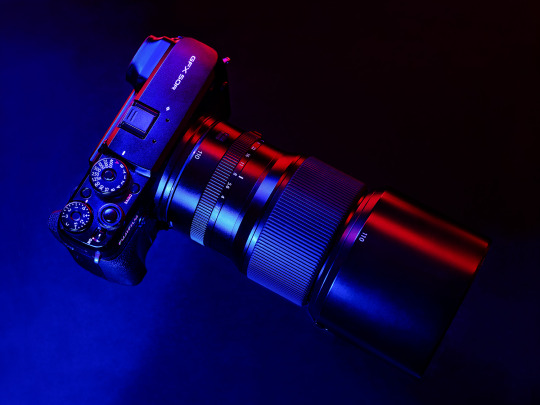

One year after switching, I am now knee-deep into the system, having sold most of my Nikon gear as well as my Mamiya medium format film-cameras to acquire some of the incredibly hard to resist GF lenses.
After a year of transforming a heap of dormant gear and side-gig revenue into new lenses, I also noticed that the representation I had about the worth of money also changed radically when gear was concerned.
A little over a year ago, an XF lens priced 800€ definitely seemed like a steep investment I'd try to find alternative choices for. Nowadays, 800€ is a mere budget lens in my mind. Seeing the price tags of GF lenses doesn't make my head spin anymore and this is somewhat worrisome for the thrifty Dutchman living in the back of my brain.
With the announcement of the 500mm F5.6 lens being in development (a focal length I definitely miss from my Nikon days, I'm a sucker for ultra-telephoto landscape photography), I fear I will manage to push my monetary boundaries further back yet, which I will help achieve by selling my X-T3 video-oriented kit.
APS-C: you're dead to me.
An unforeseen consequence of my GFX switch was that my aps-c cameras were pretty much relegated to the bottom gear drawer and seldom used barring a few notable exceptions (such as a wedding gig) where the need for its autofocusing speed was greater than the need for image and file quality.
To reuse the analogy I made earlier; my X-Pro 2 and X-T3 have become to me what a micro-four-thirds camera would be to a full-frame camera user. Getting into Fujifilm's medium format system prompted me to think about how I use my cameras and to what end. The realisation that there is a clear split in my photographic approaches I evoked at the very beginning of this article is the result of that thought process.
Although I will sell my X-T3 because it feels superfluous and I want to stop my video gigs completely, (and because my need for GFX lens money is still great), I would never part with my X-Pro 2 nor the few XF lenses that I have as they serve a totally different purpose to that of the GFX's.
Having a compact, fast, discreet yet still capable camera that can be casually put into a pocket is an advantage that I would be a fool to part with. The X-Pro is a more practical choice for street-photography, documentary in less-than-favourable conditions, as well as for family pictures, when packing a brick of a camera and two bricks worth of lenses for a walk in the park in suboptimal weather would be met with a tired roll-eye from my spouse.
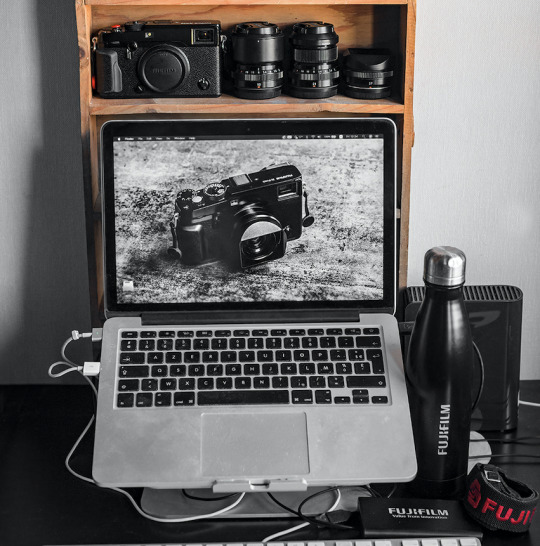
My dear X-Pro, I'm Never Ever Gonna Give You Up
Of course there have been many occasions for which I have chosen to take the challenge and went into these situations with the GFX. However, I wouldn't want the GFX to be the only option at my disposal in such cases.
For example, during the last wedding I shot, when the dining room got darker and the guests started moving around a lot (and dancing), the switch to aps-c cameras was absolutely necessary because of how difficult it was to consistently get acceptable results in poor light and with subjects making erratic movements. When you are held under a result-delivering imperative, you have to be able to honour it.
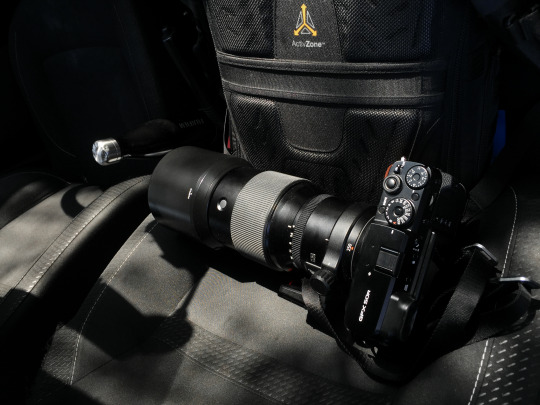
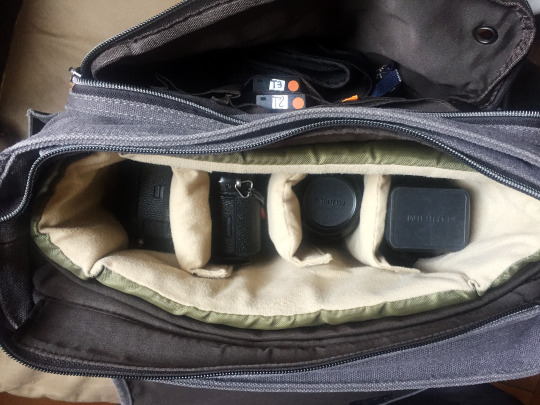
Packing a Fuji GF or Fuji X kit can be a slightly different experience
"Megapickles don't matter!"
This was an idea that I lived by just a few years ago. I changed my mind. I still believe that megapixels don't matter when you don't have them. Just like one should shoot with the camera one has / is able to afford. It doesn't matter in the grand scheme of things but all these technical niceties just make one's life more comfortable. Cropping, denoising through file reduction algorithms, or enjoying detail endlessly because one can, these are just the icing on the cake. I just happen to like my cakes with more icing than cake now.
Regarding resolution specifically, it's been another area in which there seems to be no possible coming back. Nowadays, every time a manufacturer announces a new camera and I discover they plan to fit it with a 24MP sensor I dismiss the information entirely. It doesn't register anymore. 32-36 is the new 24 in my mind now and it's sometimes difficult to come back from those expectations.
This being said I have no issue using lower resolution aps-c that I own and could perhaps even have fun with a X-Pro 1 because then the output quality wouldn't be my prime concern. It is only concerning new releases that my interest dips firmly for "low" MP cameras.
Did I tell you that medium format AF sucks?
Before I conclude this one-year review, let me hammer this point in with a two-handed mace; it can't be understated, especially for the GFX 50 series which uses contrast detection — the autofocus will throw you back to the early 2000s. Be ready to be stuck on single point, single AF mode because that's the only thing that will be consistent enough.
Then let's not forget other factors that add to the bad and make it worse; the shutter lag is half a second, the sensor readout speed is 1/4th of a second, and the time the shutter takes to clear the large sensor in combination with the camera's high resolution means you'll need higher shutter speeds in order to get rid of motion blur when shooting handheld (count about one stop faster than usual). Those would be valid reasons as to why a less niche camera system makes more sense for a lot of people.
The final comment:
Despite its sometimes dramatic drawbacks, I definitely have found the pleasure I sought when I originated this system switch. The change and the adapting my process is engaging and makes me think more about what I do, what I use, when and why. This is a win on its own.
All in all I feel like I am still at the very start of my journey though I've had the opportunity to test my GFX 50R in a wide array of situations in the past year (portrait, landscape, documentary) it seems like the way forward is clear and also opened for plunging deeper into this incredibly fun (but needlessly expensive) rabbit hole.
The upcoming 500mm, the prospect of finding an original GFX 100 (with its weirdly appealing tiltable EVF) are ideas that will — for the foreseeable future — definitely keep pulling me back in (and emptying my pockets).
Fun! Fun! Fun!
8 notes
·
View notes
Photo

Did anyone else binge “That 90’s Show” on Netflix?? I watched the original and thought this was tons of fun with lots of cameos and the next generation. Check out the interview of Ashley Aufderheide at PhotoBook @photobookmagazine @ashleyaufderheide @netflix #that90sshow PhotoBook Editor-In-Chief: Alison Hernon @718blonde PhotoBook Creative Director: Mike Ruiz + @mikeruiz.one @mikeruizone Fashion Stylist: Alison Hernon @718blonde Hair: Shanice Fields @styledbyshanicef Makeup: Eric Vosburg at Uncommon Artists @ericvosburg @uncommon_artists Fashion Styling Interns: Summer Safi, Angie Hines @angiehiness Tearsheets by Daniel López, Art Director, PhotoBook Magazine @alarcn.daniel Interview by Julieta Guerra, Contributor, PhotoBook Magazine @guerra.ba #camera Fuji GFX 102mp with 110mm lens @fujifilmx_us and lighting by @broncolorusa #photo #photography #fashion #netflix (at New York, New York) https://www.instagram.com/p/CpSnPW8untS/?igshid=NGJjMDIxMWI=
1 note
·
View note
Text
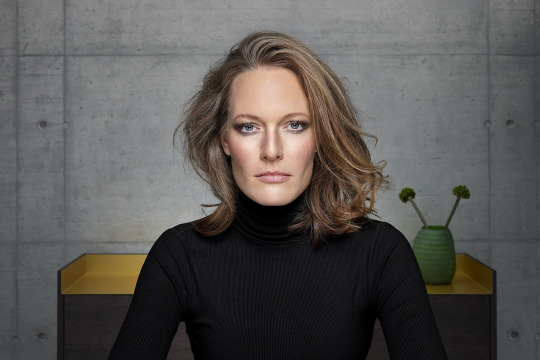
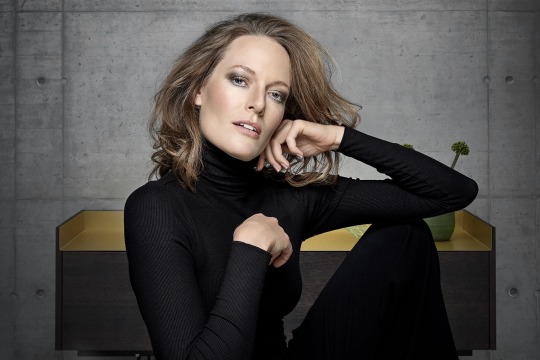
Model: Susanne Seiler, Hair Make up: Nicole Friedrich
Kamera: Fuji GFX 50 S, GF 32-64mm f4
Flashlight: Profoto B10 and B10 Plus
Photograph and Postproduction: Francisco Lopez, www.lopez-fotodesign.de
8 notes
·
View notes
Text
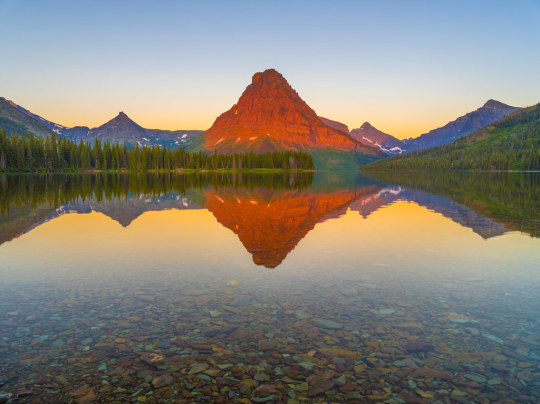
Rising Wolf Mountain Reflection Two Medicine Lake Colorful Rocks Glacier National Park Montana Wilderness Fine Art Landscape Photography Fuji GFX100s Medium Format MT! Elliot McGucken Master Fine Art Nature Photographer American West Fuji GFX 100 s
0 notes
Photo
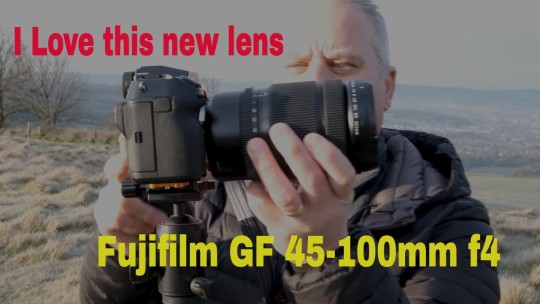
Landscape photography Sunrise with Fuji GFX50s II. Sunrise in the Cotswolds using medium format Fuji GFX 5Os II Another early morning start -2 degrees this morning. --------------------------------- Equipment: Fuji GFX 50 S II Fuji XT4. DGI mini II Drone. 18/55 Fuji lens. 55/200 Fuji Lens DJI PLandscape photography Sunrise with Fuji GFX50s II via Pocket https://www.youtube.com/watch?v=sUUTQZ8m_Hc
0 notes
Text
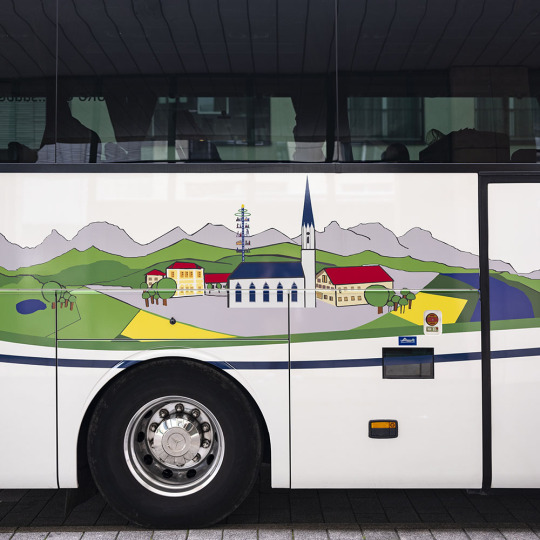
travel
5 notes
·
View notes
Text
Adobe Plug Ins For Mac

Free Adobe Update For Mac
Adobe Plug-ins For Mac
Do you need Adobe Flash Player for Mac? If the website you are using says it needs Flash we'll show you how to get Flash Player safely - but beware: some malware can come under the guise of a. If not, consider installing any available updates prior to upgrading Mac OS, or postponing updating until those plug-ins are updated. Sweetwater is maintaining a list of compatible hardware and plug-ins which you may want to review before updating. How to unblock plug-ins in Mac OS X Safari. We're going to assume that Adobe Flash is probably the problematic plug-in. Flash is a target for internet ne'er-do-wells and frequently needs updating. For instructions, see Install an older version of Adobe Reader on Mac OS. Double-click the.dmg file. (If you don't see the Safari Downloads window, click Finder (User Name) Downloads.) Double-click Install Adobe Acrobat Reader DC to start the installation.
March 21, 2018
5 min to read
How to install Photolemur plugins
Photolemur can be used as a plugin in Adobe Photoshop CS5 or higher.

To install the plugins, launch Photolemur and open its top menu. In the menu, select Install Plugins.
Then you’ll see a window with the list of available plugins. To install a plugin, click the Install button next to Adobe Photoshop or Lightroom.
Then click Done and relaunch the app to apply changes.
How to use the Photolemur plugin in Photoshop
In Photoshop, Photolemur can be used for single image processing only.
To edit your photo with the Photolemur plugin for Photoshop:
1. Launch Photoshop and open your photo.
In the top menu, click Filter and select Skylum Software -Photolemur.
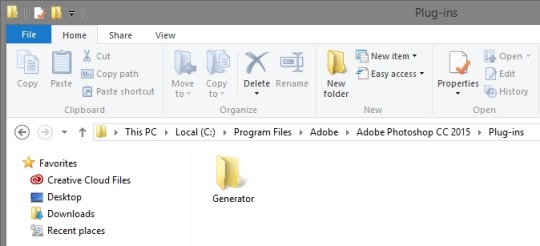
3. Photolemur will start doing its magic. When it’s done, you can use the slider to control the final result (the brush icon next to Done) or save changes (Done).
When you click Done, Photolemur’s adjustments will be applied to your photo.
Plugin acquired. Next click on this Install link to open Creative Cloud App and finish installation.
An unexpected error occurred. Please try again later.
(53)
A plug-in software to enable Mac tethered shooting with the compatible FUJIFILM digital cameras.
Mac for the blind. A plug-in software to enable Mac tethered shooting with the compatible FUJIFILM digital cameras.
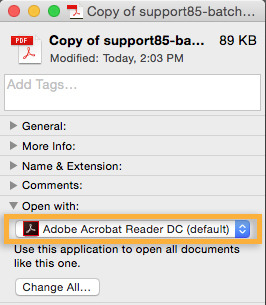
Version: 1.16.0
Compatibility: Mac
Product(s):
Disclaimer
Adobe’s privacy policy is not applicable to the use of this app, extension or integration. Please refer to the privacy policy provided by the developer or contact the developer directly for more information about their privacy practices.
Product Info
IMPORTANT NOTICE: - The GFX series limited edition of the plug-in is available for free from: https://exchange.adobe.com/creativecloud.details.20527.fujifilm-tether-shooting-plug-in-pro-for-gfx-mac.html - If you have ”FUJIFILM Tether Shooting Plug-in PRO”( PRO version ), this plug-in is not necessary. Once a FUJIFILM tether shooting capable camera is connected to a computer via USB cable, the Tether Shooting Plug-in allows users to import captured images directly to the computer. X-T2, X-T3, X-T4, X-Pro2, X-Pro3, X-H1, and GFX Series also support Wi-Fi connection instead of USB cable. VIDEO: (English) https://youtu.be/bm52k7LvNHs (Japanese) https://youtu.be/G4ohs1-gz-U CONTACTS: https://www.fujifilm.com/contact/ COMPATIBLE CAMERAS: - FUJIFILM GFX 100 All Versions(USB/Wi-Fi) - FUJIFILM GFX 50R All Versions(USB/Wi-Fi) - FUJIFILM GFX 50S All Versions(USB) / Ver.1.10 or later (Wi-Fi) - FUJIFILM X-T1 Ver.3.10 or later(USB) - FUJIFILM X-T2 Ver.1.10 or later (USB) / Ver.2.10 (Wi-Fi) - FUJIFILM X-T3 All Versions(USB/Wi-Fi) - FUJIFILM X-T4 All Versions(USB/Wi-Fi) - FUJIFILM X-Pro2 Ver.4.00 or later (USB/Wi-Fi) - FUJIFILM X-Pro3 All Versions(USB/Wi-Fi) - FUJIFILM X-H1 All Versions(USB/Wi-Fi) BEFORE STARTING THE PLUG-IN, PLEASE CHECK: - The camera is upgraded with the latest version of the firmware. - NO camera control application other than Lightroom (such as iPhoto, Photos..) is running. - Follow the Owner's Manual or New Feature Guide instruction and set the connection mode to tethering mode. (PC SHOOT AUTO, USB AUTO, USB TETHER SHOOTING AUTO, and so on) - ”FUJIFILM Tether Plugin” is ENABLED at ”File”->”Plug-in Manager” menu of Lightroom menu.
Best pc games for mac 2012. Stardew Valley may look like a cousin of The Legend of Zelda: A Link to the Past, but in practice few games veer so far from fantasy as to capture the quiet delights or tragedies of reality. The so-called 'Metroidvania' genre has felt hollow for years now, but fills that void so well that we should probably rename the genre in honor of it.
Select the 4K video you want to watch and click “Open” button. 123 player for mac free download.

Ratings & Reviews
5 stars4 stars3 stars2 stars1 star
Notes & Docs
Ver.1.16.0 - FUJIFILM X-T4 is supported. Ver.1.15.0 - FUJIFILM X-Pro3 is supported. - macOS 10.15 (Catalina) is supported. - WHITE BALANCE name changed: From ”DAYLIGHT” to ”Daylight”. - WHITE BALANCE name changed: From ”CUSTOM1”, ”CUSTOM2”, and ”CUSTOM3” to ”Cus.1”, ”Cus.2”, and ”Cus.3”. Ver.1.14.0 - FUJIFILM GFX 100 is supported. Ver.1.13.0 - macOS 10.14 (Mojave) is supported. Ver.1.7.0 - FUJIFILM X-Pro2, and X-H1 are supported. - FUJIFILM GFX 50R, and X-T3 are supported. Ver.1.6.0 - Wi-Fi connection is supported for X-T2 and GFX 50S. Ver.1.4.0 - FUJIFILM GFX 50S is supported. Ver.1.3.0 - FUJIFILM X-T2 is supported. Ver.1.2.0 - White balance setting can be shown. - File format to save onto the SD card and to transfer to the Mac can be specified.
Where To Find It
WHERE TO FIND THE INSTALLED PLUG-IN: The plugin will be installed onto the modules folder of Lightroom. Once the plug-in is installed successfully, you will find the plug-in at the Lightroom Plug-in Manager window. To open the Plug-in Manager window, please select ”File” -> ”Plug-in Manager” from the Lightroom menu. Please check the installed plug-in is ”enabled” at the Plug-in Manager window. To start the plug-in, please select ”File” -> ”Tethered Capture” -> ”Start Tethered Capture” from the Lightroom menu. IMPORTANT NOTICE: - If you have ”FUJIFILM Tether Shooting Plug-in PRO”( PRO version ), ”FUJIFILM Tether Shooting Plug-in (Mac)”( this plug-in ) is not necessary. BEFORE STARTING THE PLUG-IN, PLEASE CHECK: - In case of macOS 10.15 Catalina, please allow Ligtroom to access your Document folder. - NO camera control application other than Lightroom is running. - Follow the Owner's Manual or New Feature Guide instruction, set the connection mode to tethering mode (PC SHOOT AUTO, USB AUTO, USB TETHER SHOOTING AUTO).
Free Adobe Update For Mac
More By This Producer:
A plug-in software to enable PC tethered shooting with the compatible FUJIFILM digital cameras.
A plug-in software that enables tether shooting with compatible FUJIFILM digital cameras. PRO version is capable of operating on a computer.
A plug-in software that enables tether shooting with the compatible FUJIFILM digital cameras. PRO version is capable of operating on a computer.
FUJIFILM PRIVACY POLICY Please refer App. at: https://www.fujifilm.com/privacy_policy/ NOTICE BEFORE INSTALLING SOFTWARE PROVIDED BY FUJIFILM CORPORATION, PLEASE READ THIS END USER LICENSE AGREEMENT CAREFULLY. ONLY IF YOU DO AGREE TO THIS AGREEMENT, YOU WILL BE ABLE TO USE THE SOFTWARE. End User License Agreement This End User License Agreement (”Agreement” is an agreement between FUJIFILM Corporation (”Fuji” and you, which sets forth the terms and conditions of the license granted for you to use the software provided by Fuji. Third party software may be supplied together. In case a separate agreement is provided by a third party supplier for its software, the provisions of such separate agreement shall apply to the use of such third party software, prevailing over those of this Agreement. 1.?Definitions. (a)?”Software” means the software which is provided to you together with this Agreement. (b)?”Documentation” means the operation manuals of Software and other related written materials which are provided to you together with Software. (c)?”Product” means Software and Documentation collectively. 2.?Use of Software. Fuji grants to you a nontransferable, nonexclusive license: (a)?to install one copy of Software onto one computer in binary machine executable form; (b)?to use Software on the computer onto which Software is installed; and (c)?to make one backup copy of Software. 3.?Restrictions. 3.1?You shall not distribute, rent, lease or otherwise transfer all or any part of Software or Documentation to any third party without Fujiis prior written consent. You also shall not sublicense, assign or otherwise transfer all or any part of the rights granted to you by Fuji under this Agreement without Fujiis prior written consent. 3.2?Except as expressly granted by Fuji hereunder, you shall not copy or reproduce all or any part of Software or Documentation. 3.3?You shall not modify, adapt or translate Software or Documentation. You also shall not alter or remove copyright and other proprietary notices that appear on or in Software or Documentation. 3.4?You shall not, or shall not have any third party, reverse-engineer, decompile, or disassemble Software. 4.?Ownership. All copyrights and other proprietary rights to Software and Documentation are owned and retained by Fuji or the third party suppliers as indicated on or in Software or Documentation. Nothing contained herein shall be construed, expressly or implicitly, as transferring or granting any right, license, or title to you other than those explicitly granted under this Agreement. 5.?Limited Warranty. In case Software is provided with media, such as a CD-ROM, Fuji warrants to you that the media is free from any defect in material and workmanship under normal use for ninety (90) days from the date of your receipt thereof. Should the media not meet the foregoing warranty, Fuji shall replace such defective media with other media bearing no defect. Fujiis entire liability and your sole and exclusive remedy with regard to any defect in media shall be expressly limited to such Fujiis replacement of media as provided herein. 6.?DISCLAIMER OF WARRANTY. EXCEPT AS PROVIDED IN SECTION 5 HEREIN, FUJI PROVIDES PRODUCT iAS ISAEAND WITHOUT WARRANTIES OF ANY KIND, EXPRESS OR IMPLIED. FUJI SHALL MAKE NO WARRANTY, EXPRESS, IMPLIED OR STATUTORY, AS TO ANY OTHER MATTERS, INCLUDING, BUT NOT LIMITED TO, NON-INFRINGEMENT OF ANY COPYRIGHT, PATENT, TRADE SECRET, OR ANY OTHER PROPRIETARY RIGHTS OF ANY THIRD PARTY, MARCHANTABILITY, OR FITNESS FOR ANY PARTICULAR PURPOSE. 7.?LIMITATION OF LIABILITY. IN NO EVENT SHALL FUJI HAVE ANY LIABILITY FOR ANY GENERAL, SPECIAL, DIRECT, INDIRECT, CONSEQUENTIAL, INCIDENTAL, OR OTHER DAMAGES (INCLUDING DAMAGES FOR LOSS OF PROFITS OR LOST SAVINGS) INCURRED FROM THE USE OF OR INABILITY TO USE PRODUCT EVEN IF FUJI HAS BEEN ADVISED OF THE POSSIBILITY OF SUCH DAMAGES. 8.?No export. You acknowledge that neither Software nor any part thereof will be transferred or exported to any country or used in any manner in violation of any export control laws and regulations to which Software is subject. 9.?Termination. In case you breach any of the terms and conditions hereof, Fuji may immediately terminate this Agreement without any notice. 10.?Term. This Agreement is effective until the date when you cease to use Software, unless earlier terminated in accordance with Section 9 hereof. 11.?Obligation upon termination. Upon termination or expiration of this Agreement, you shall, at your own responsibility and expense, delete or destroy immediately all Software (including its copies), Documentation and media if Software is provided therewith. 12.?Governing Law. This Agreement shall be governed by and construed in accordance with laws of Japan.
Adobe Plug-ins For Mac
Make sure you have the Creative Cloud Desktop App installed before acquiring extension. Click Reject/Cancel to abort purchase. Click Accept/Continue to acquire extension.

0 notes
Photo










In anticipation of my acquisition of a GFX 50R, I’ve fallen into the Hassie Xpan / Fuji TX1′s 65:24 image ratio and am currently rummaging through my library in order to salvage leftovers and discards because seemingly uninteresting compositions in 3:2 can look much better in wide.
Can’t wait to get to shoot street photography in that crop mode on GFX!
13 notes
·
View notes
Photo
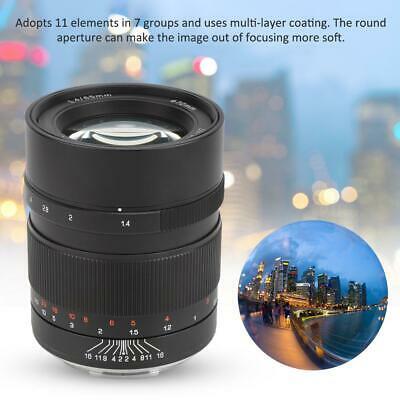
%^ ZHONGYI 65mm F1.4 GFX Mount Fixed Focal Lens for Fuji GFX100 50R/S Mount Lens https://ift.tt/2LNEblu
0 notes
Text
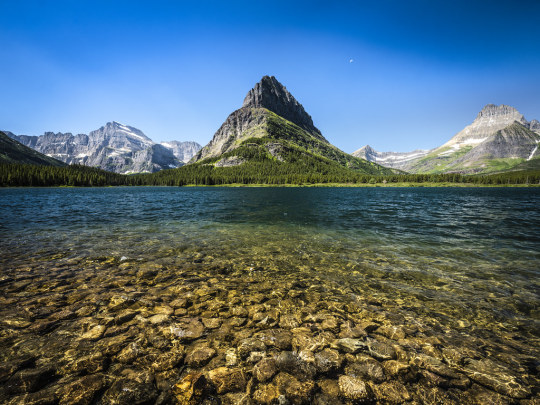
Rising Wolf Mountain Two Medicine Lake Glacier National Park Montana Wilderness Fine Art Landscape Photography Fuji GFX100s Medium Format MT! Elliot McGucken Master Fine Art Nature Photographer American West Fuji GFX 100 s
0 notes
Photo
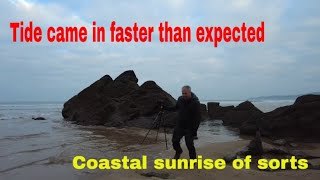
Landscape photography beach time again, success & failure. Difficult times in this landscape photography shoot. lighting wasn't as good as I would have liked. Some of the video has had the audio added later. .................................................. Equipment: Fuji GFX 50 S II Fuji XT4. DGLandscape photography beach time. The tide moves fast. via Pocket https://www.youtube.com/watch?v=fVcqxOdnC58
0 notes
Photo
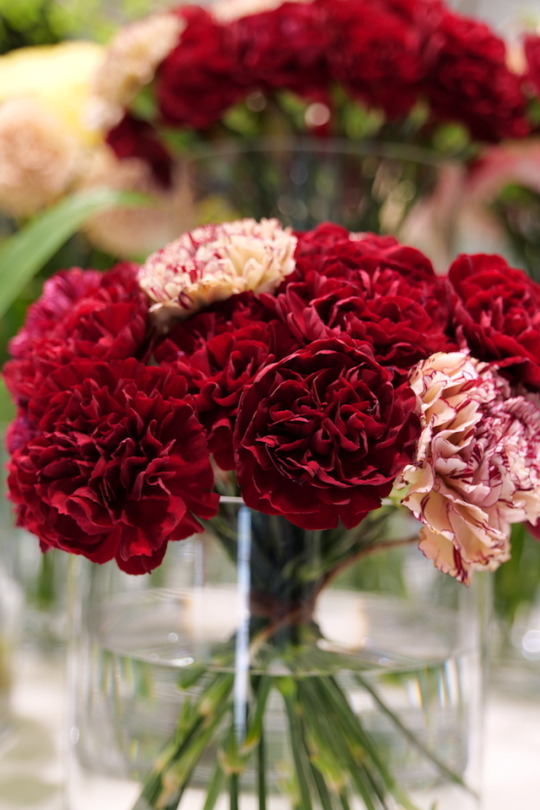
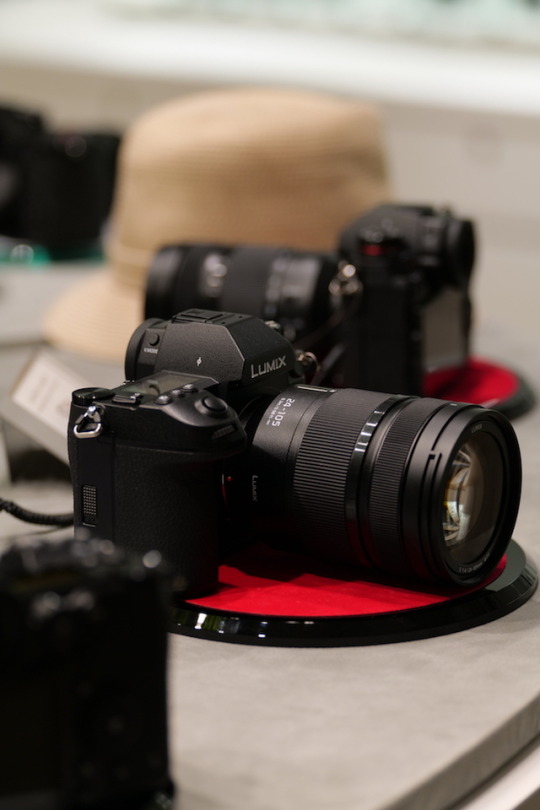

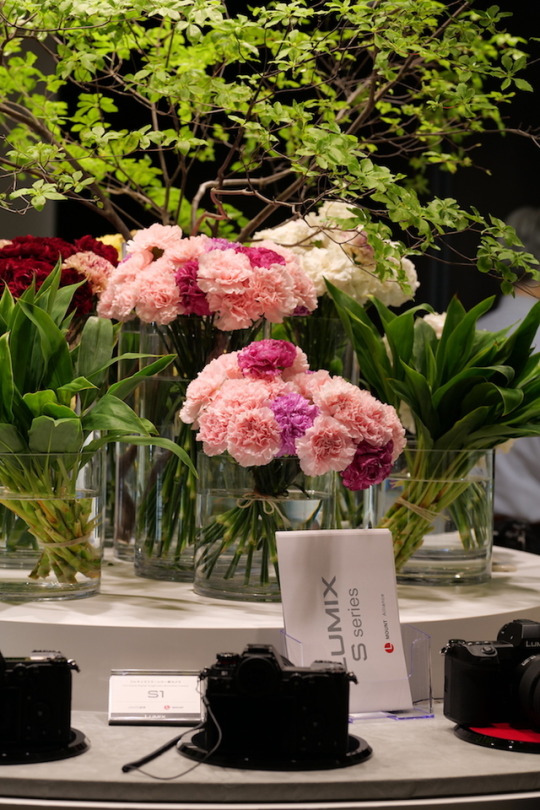
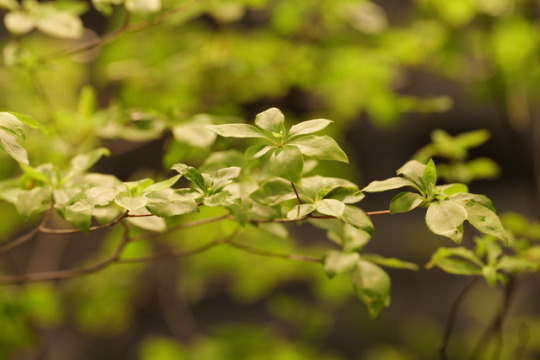

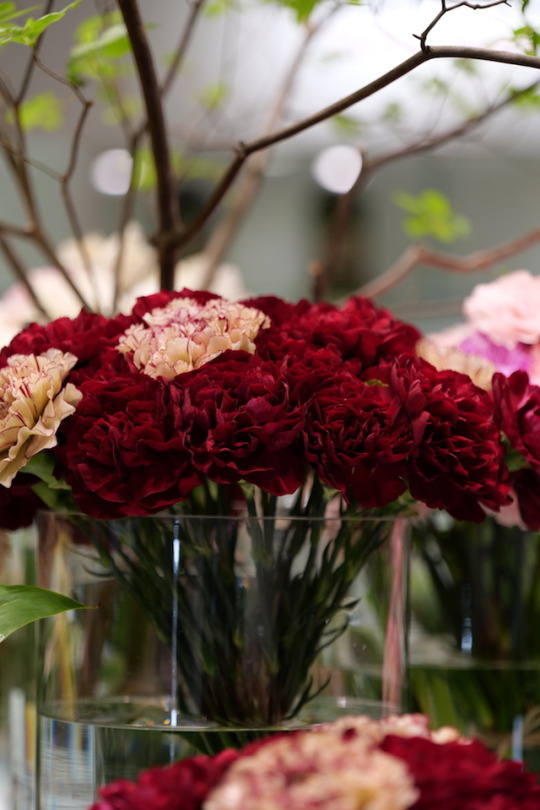
LUMIX GINZA TOKYO~Panasonic Lumix DC-S1R (New full-frame high-resolution mirrorless digital camera) (2)
���第一印象は、なんと言っていいのか分からないのですが、不思議な感覚でした。
ミラーレス一眼はまだ購入していませんが、ある程度の時間試写させてもらったミラーレスとしてはSIGMA sd Quattro, FUJI GFX 50S, NIKON Z7/Z6, EOS Rなどがありますが、これらは良くも悪くもいろいろな意味でこれがミラーレスか!?という感慨・驚きを持ちました。しかし、S1Rは、そのずっしりとした塊感・重量感、印象的なシャッターフィーリング、美しいEVFなどから、体に慣れ親しんだ一眼レフの感覚そのもの、でもメカや機能は最先端のミラーレス、といった不思議さ? だったようです。CANONやNIKONのフラッグシップ機もこんな感じになるのしょうか。
カメラとしての機能・使い勝手・画像処理については、実際使ってみると気になる点はいろいろとあるのでしょうが、骨董品のようなカメラ(CONTAX645)や旧式センサー(Phase One P30+)を使っている身としては、改めて感慨深いものを感じました。5000万画素に近い画像は素晴らしく高精彩。あまりに艶やか・美しすぎて、これが今風の記憶色?と思うとちょっと引けてしまう反面、私の方が大きくずれているのかと不安にも(笑)。
FUJIKINAでGFX100などを見ることができないのは残念でしたが、今日はこれでおしまいにしました。
LUMIX GINZA TOKYO, MAY 2019, LUMIX S1R LUMIX S 24-105mm F4 MACRO O.I.S. LUMIX S PRO 50mm F1.4 LUMIX S PRO 70-200mm F4 O.I.S We can look at the enlarged images clicking the original ones.
0 notes
Text
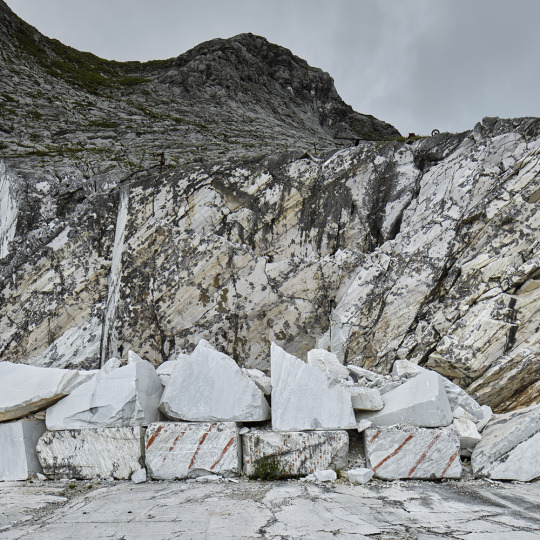
transformation
#© victor s. brigola#brigola#transformation#marble#carrara#italy#italia#new topographics#white#arca swiss#fuji gfx#fotosommer stuttgart
6 notes
·
View notes